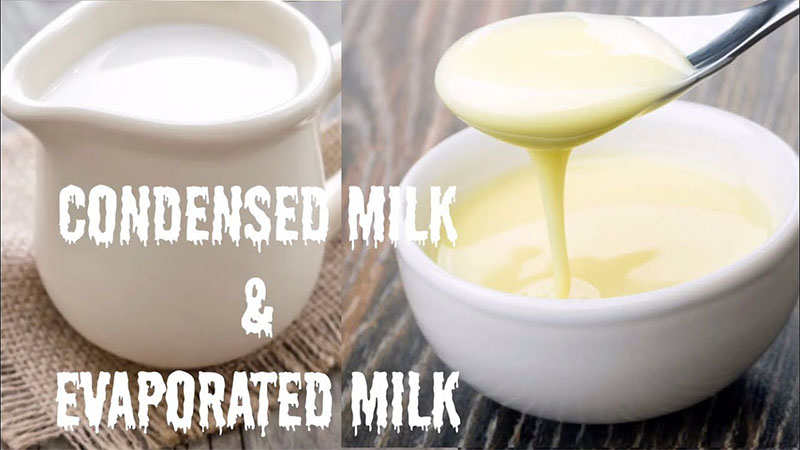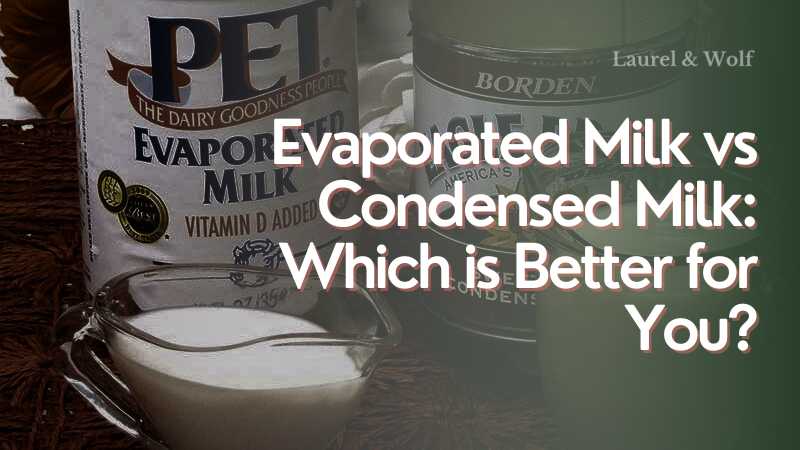Ever grabbed a can of evaporated or condensed milk and hesitated, wondering if they’re just two names for the same thing? You’re not alone. They look similar, sit next to each other on store shelves, and both come in cans. But despite their nearly identical origins, these two take very different paths—and using the wrong one in a recipe could turn a masterpiece into a mess.
Let’s break it down so you never second-guess your choice again.
What Sets Them Apart?
Fresh milk is easy to recognize. Whole milk? Still pretty simple. But once milk goes through processing, things get murky. Evaporated and condensed milk both start as regular cow’s milk, with about 60% of the water content removed. That’s where their similarities end.
Evaporated Milk
Think of evaporated milk as milk that’s just been concentrated—no frills, no extras, just milk with much of the water taken out. The result? A thicker, creamier liquid with a hint of caramel flavor, thanks to the heating process.
Nutritionally, it holds its ground against fresh milk, often with a boost of added vitamin D. Some brands even throw in vitamins A or C, making it a solid choice for those looking to pack in extra nutrients.
Condensed Milk
Condensed milk? That’s a different story. It starts out just like evaporated milk, losing 60% of its water. But then comes the game-changer: sugar. Lots of it. Enough to turn it into a thick, syrupy, decadently sweet product that’s more of a dessert ingredient than a milk replacement.
While it still carries the same base nutrients as evaporated milk, the added sugar skyrockets its calorie content, making it better suited for coffee, baking, and sweets rather than everyday drinking.

How They’re Made
Their processing methods are similar at first but take a sharp turn once sugar enters the equation.
Evaporated Milk
The process is simple: fresh cow’s milk is heated until 60% of the water evaporates. Once thickened, it’s cooled rapidly, with stabilizers or vitamins sometimes added. It’s then sealed into cans and sterilized to ensure it lasts for months, even years, without refrigeration.
The heating process gives it a darker color than fresh milk, and some brands adjust the fat content to cater to different dietary needs.
Condensed Milk
The initial steps mirror those of evaporated milk—standardizing the milk, heating it up to 85–90°C (185–194°F) for a few seconds to kill bacteria, and reducing the water. But then sugar enters the mix.
Why sugar? It’s not just about taste. The high sugar content acts as a preservative, preventing bacteria from thriving and extending shelf life dramatically. Once the milk thickens into that signature syrupy consistency, it’s cooled, packaged, and ready to hit store shelves.

Benefits of Evaporated Milk vs Condensed Milk
If you’re choosing between evaporated and condensed milk, it all comes down to what you’re making.
Condensed milk is a sugar bomb, so if you’re trying to cut down on sweets or manage blood sugar levels, it’s not your best bet. But if you’re whipping up desserts, creamy coffee drinks, or rich sauces, it’s a must-have. Just a little can transform a recipe.
Evaporated milk, on the other hand, is a better fit for those wanting creaminess without the sugar overload. It’s a go-to for soups, sauces, and even as a milk substitute in certain recipes.
One thing to remember: they’re not interchangeable. If you’re in a pinch and need whole milk but only have condensed milk, you’ll need to dilute it—and be prepared for a much sweeter taste.
Nutritional Composition of Condensed Milk
Condensed milk isn’t just sugar and dairy. It’s also packed with protein, fat, and essential vitamins like A, D, and B1. While it’s a powerhouse for those looking to gain weight or boost energy levels, too much can tip the scales in the wrong direction.
People often use it in weight-gain diets, mixing it into coffee, spreading it on bread, or blending it into smoothies. But moderation is key—too much can lead to digestive issues, sugar crashes, and unwanted extra pounds.
To get the best out of condensed milk:
- Don’t overdo it—excess sugar can cause digestive issues.
- Use high-quality brands to avoid unnecessary additives.
- Pair it with a balanced diet and some physical activity to keep things in check.
- Stick to a proper sleep schedule—yes, even sugar intake can affect sleep.

How Should You Use Condensed Milk?
Condensed milk isn’t meant to be a go-to milk substitute—it’s more of a luxury ingredient. It’s perfect for thickening and sweetening everything from coffee and tea to baked goods and creamy desserts.
But here’s where things get tricky: Some people mistake it for a full-fledged milk replacement, which can lead to nutritional gaps—especially for children. That’s why some countries have introduced regulations, including:
- Requiring clear labeling to prevent confusion.
- Advising against giving it to children under two years old.
- Running awareness campaigns to correct misconceptions.
- Supporting milk donation programs to provide better options for those in need.

Final Thoughts
Evaporated and condensed milk may come from the same source, but their uses couldn’t be more different. Now that you know the difference, you’ll never mistake one for the other again. Whether you need a rich, creamy addition to your coffee or a sugar-free alternative for cooking, choosing the right one makes all the difference.
Always check the label before buying, and remember—what’s in the can will shape how your dish turns out!
